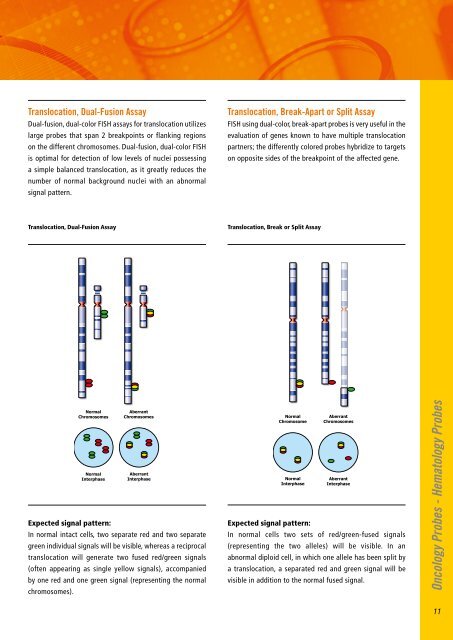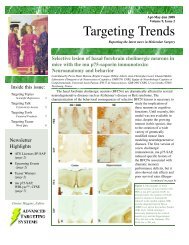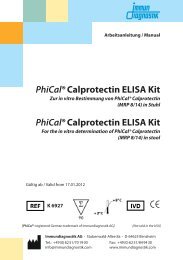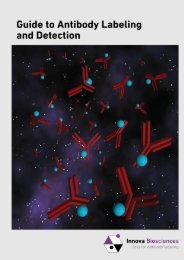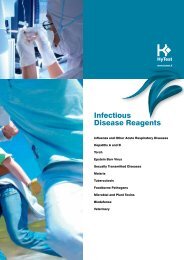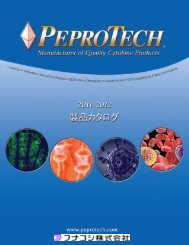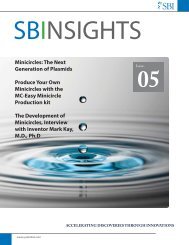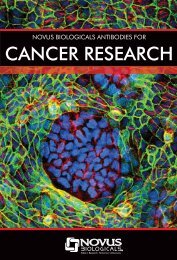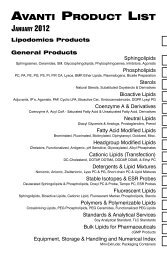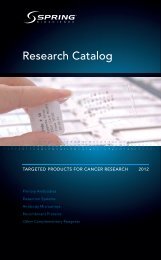Oncology Probes
Oncology Probes
Oncology Probes
- No tags were found...
You also want an ePaper? Increase the reach of your titles
YUMPU automatically turns print PDFs into web optimized ePapers that Google loves.
Translocation, Dual-Fusion AssayDual-fusion, dual-color FISH assays for translocation utilizeslarge probes that span 2 breakpoints or flanking regionson the different chromosomes. Dual-fusion, dual-color FISHis optimal for detection of low levels of nuclei possessinga simple balanced translocation, as it greatly reduces thenumber of normal background nuclei with an abnormalsignal pattern.Translocation, Break-Apart or Split AssayFISH using dual-color, break-apart probes is very useful in theevaluation of genes known to have multiple translocationpartners; the differently colored probes hybridize to targetson opposite sides of the breakpoint of the affected gene.Translocation, Dual-Fusion AssayTranslocation, Break or Split AssayNormalChromosomesNormalInterphaseAberrantChromosomesAberrantInterphaseExpected signal pattern:In normal intact cells, two separate red and two separategreen individual signals will be visible, whereas a reciprocaltranslocation will generate two fused red/green signals(often appearing as single yellow signals), accompaniedby one red and one green signal (representing the normalchromosomes).NormalChromosomeNormalInterphaseAberrantChromosomesAberrantInterphaseExpected signal pattern:In normal cells two sets of red/green-fused signals(representing the two alleles) will be visible. In anabnormal diploid cell, in which one allele has been split bya translocation, a separated red and green signal will bevisible in addition to the normal fused signal.<strong>Oncology</strong> <strong>Probes</strong> - Hematology <strong>Probes</strong>11


